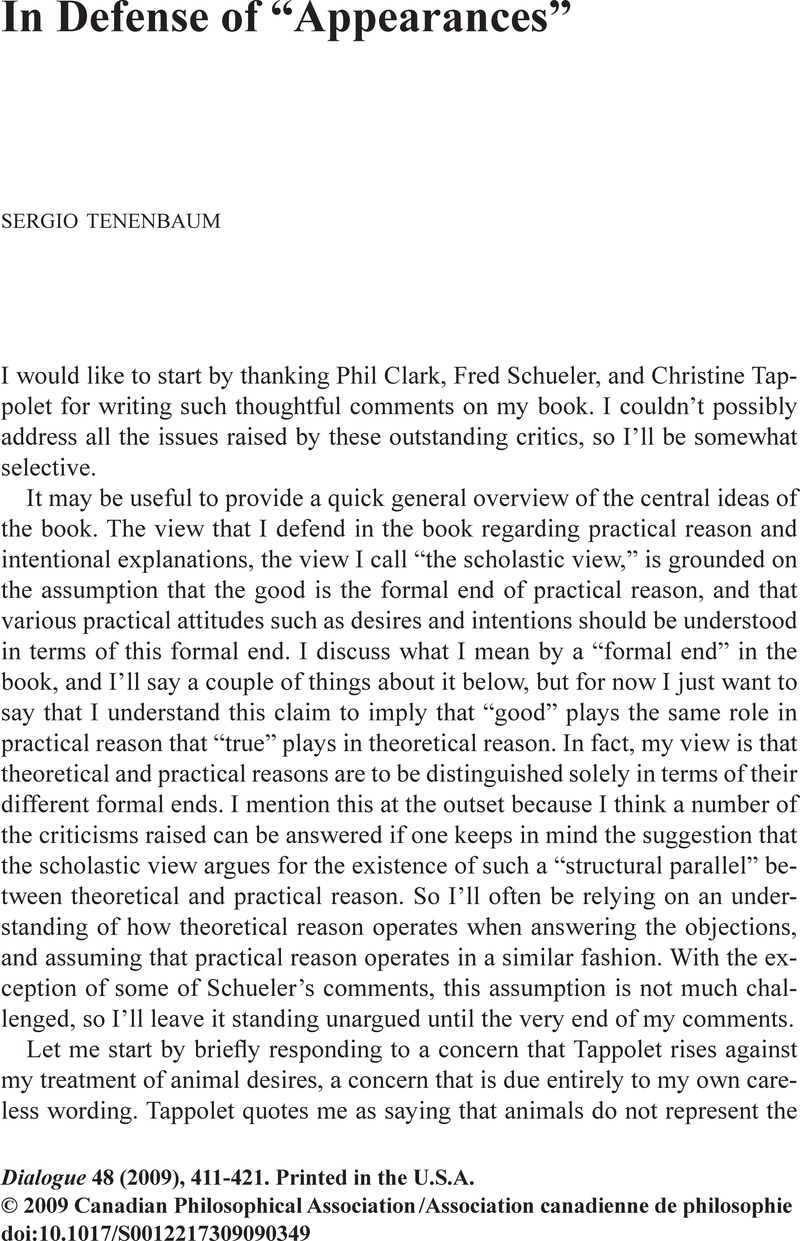Article contents
In Defense of “Appearances”
Published online by Cambridge University Press: 01 June 2009
Abstract

- Type
- Book Symposium/Tribune du livre
- Information
- Dialogue: Canadian Philosophical Review / Revue canadienne de philosophie , Volume 48 , Issue 2 , June 2009 , pp. 411 - 421
- Copyright
- Copyright © Canadian Philosophical Association 2009
References
Notes
1 Jennifer Hawkins has recently argued for the claim that animal desire should be understood as representing the good nonconceptually, but if I understand Tappolet she wants to argue more generally that desires are nonconceptual representations with the same correctness conditions as evaluative judgments. See her “Desiring the Bad under the Guise of the Good” in Philosophical Quarterly 58, 2008, pp. 244-64.
2 Some of the material of the next two paragraphs appears in my “Appearing Good: A Reply to Schroeder” in Social Theory and Practice 34, 2008, pp. 131-8.
3 I do not want to commit myself to the view that the scholastic view is incompatible with any form of functionalism, but it is certainly incompatible with the kind of functionalism that Clark describes.
- 3
- Cited by




